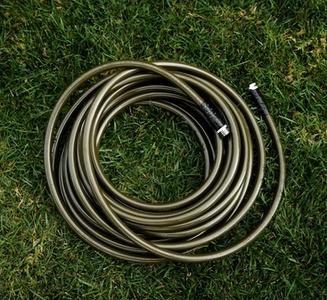How does a sharp blade help my lawn?
When you mow with sharp blades at the right height, your grass gets a clear, even cut. Dull blades can tear grass, which can give your lawn a messy, frayed look. A worn-down blade can also shock and stress your grass, leaving it more susceptible to disease. Clean-cut grass needs less water, while a sharp blade reduces the amount of fuel you’ll need to use by 20–30 percent. Ultimately, a sharp blade saves you money in the long run.
How to sharpen mower blades
Before you get started, you’ll want a good pair of work gloves and a wrench. You’ll also need a sturdy table and a c-clamp, or vice grip, to keep the blade in place while you get to work. Finally, decide whether you’d prefer to use a hand file or a drill attachment to do the actual sharpening.
- First, you’ll want to make sure that you’ve turned your mower off. Unplug or remove the battery from electric mowers. If you have a gas mower, you can avoid spilling fuel by waiting to do this until the tank’s empty. As an extra safety measure, you can also remove the spark plug to keep it from starting on you.
- Next, put on your gloves and turn over your mower so the blade is exposed. Use your wrench to loosen the bolt that’s holding it in place. Depending on the type of mower you have, you may need to work your wrench clockwise or counterclockwise to get things loose. If it isn’t coming, consider wedging a piece of wood against the blade to keep it from spinning as you work to remove the bolt.
- When you’re done, put the nut and washer somewhere away from your work area so you don’t lose them. Then, decide whether you need to sharpen or replace the blade. Do you see digs, scratches, pitting, or cracks? If the blade is cracked, you’ll need to fully replace it. Otherwise, you can move onto the next step.
- Clamp your blade to a sturdy surface, like a worktable. Find the cutting edge of your blade, which is typically at about a 45º angle.
- If you use a hand file, run it along the edge of the blade away from you at a 45º angle. Apply a little bit of pressure, but not too much. The goal here is to sharpen the blade to a butter knife rather than a razor’s edge.
- If you haven’t taken off much material, you can skip this step. Otherwise, you can balance your blade by mirroring your sharpening on the other side of the blade.
- Put the blade back on your mower by tightening the nut and washer. You’re all set to mow, and should only sharpen your blades after about 25 hours of use. Depending on how big your property is, that usually means once a season.


















